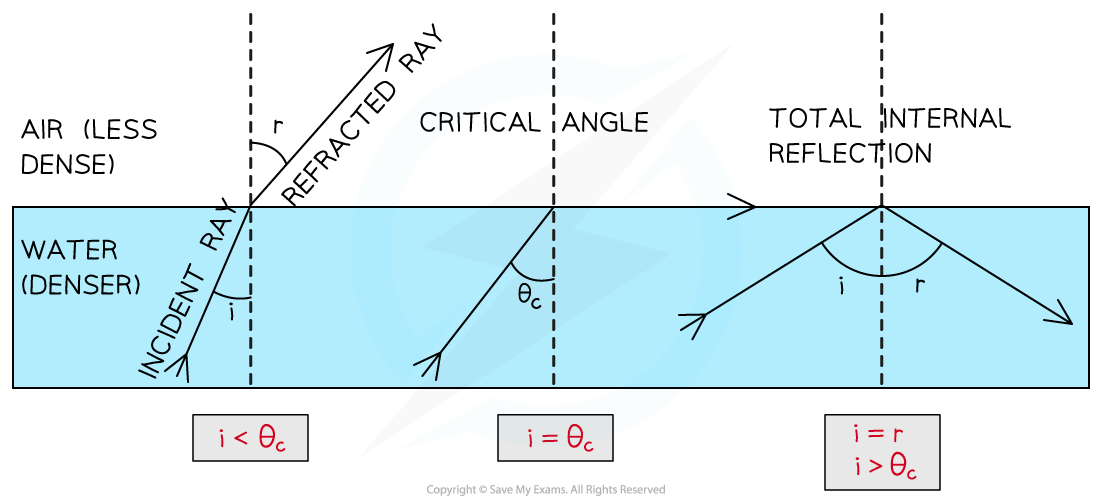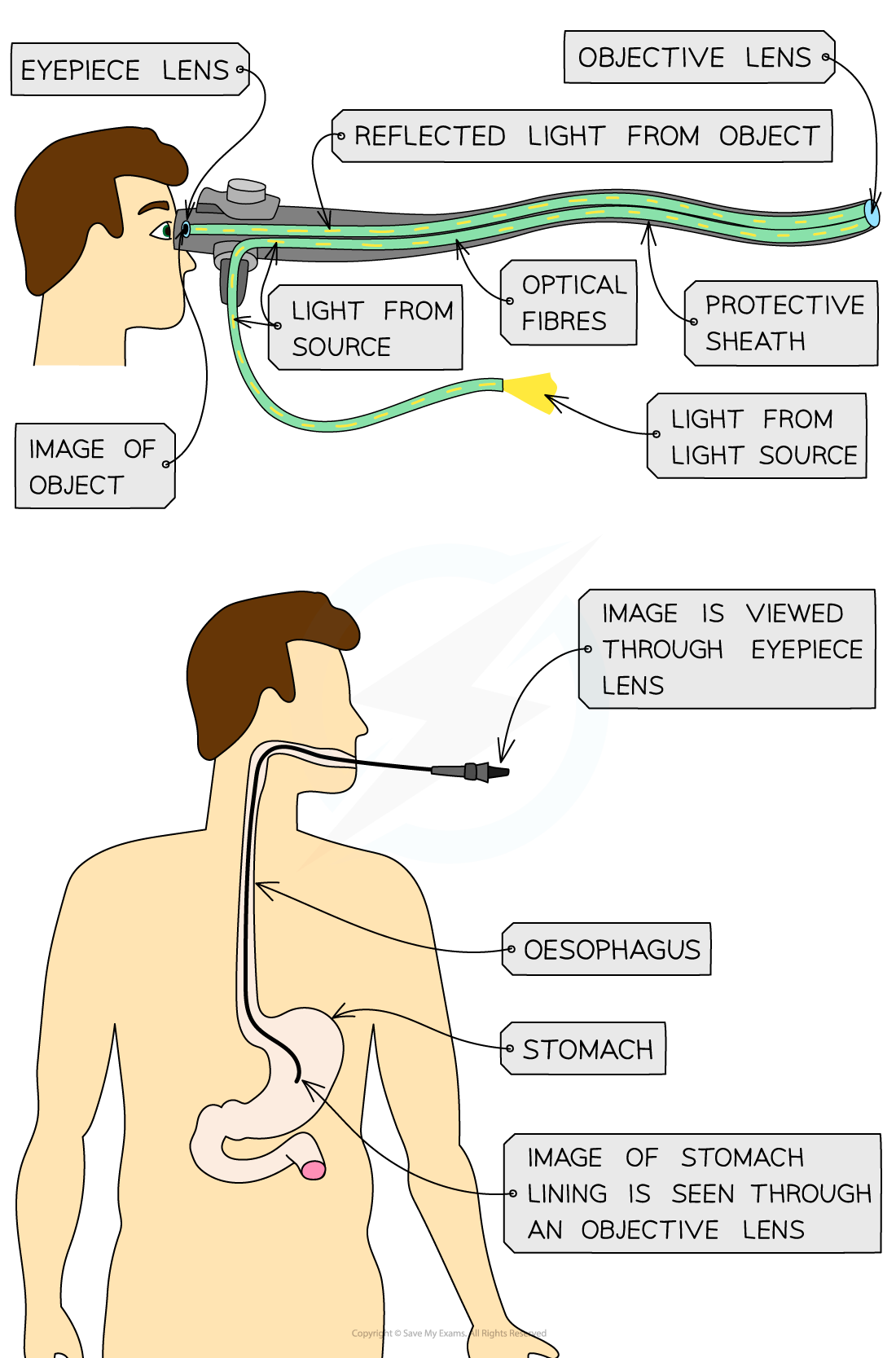Total Internal Reflection (Cambridge (CIE) O Level Physics) : Revision Note
Did this video help you?
Total Internal Reflection
Sometimes, when light is moving from a denser medium towards a less dense one, instead of being refracted, all of the light is reflected
This phenomenon is called total internal reflection
Total internal reflection (TIR) occurs when:
The angle of incidence is greater than the critical angle and the incident material is denser than the second material
Therefore, the two conditions for total internal reflection are:
The angle of incidence > the critical angle
The incident material is denser than the second material
Critical Angle and TIR

TIR occurs when the angle of incidence is greater than the angle of reflection
Total internal reflection is utilised in:
Optical fibres e.g. endoscopes
Prisms e.g. periscopes
Prisms
Prisms are used in a variety of optical instruments, including:
Periscopes
Binoculars
Telescopes
Cameras
They are also used in safety reflectors for bicycles and cars, as well as posts marking the side or edge of roads
A periscope is a device that can be used to see over tall objects
It consists of two right-angled prisms

Reflection of light through a periscope
The light totally internally reflects in both prisms
Internal Reflection in Prisms

Single and double reflection through right-angled prisms
Examiner Tips and Tricks
If asked to name the phenomena make sure you give the whole name – total internal reflection
Remember: total internal reflection occurs when light travels from a denser material to less dense material and ALL of the light is reflected.
If asked to give an example of a use of total internal reflection, first state the name of the object that causes the reflection (e.g. a right-angled prism) and then name the device in which it is used (e.g. a periscope)
Refractive Index & Critical Angle Equation
The critical angle, c, of a material is related to its refractive index, n
The relationship between the two quantities is given by the equation:
This can also be rearranged to calculate the refractive index, n:
This equation shows that:
The larger the refractive index of a material, the smaller the critical angle
Light rays inside a material with a high refractive index are more likely to be totally internally reflected
Worked Example
Opals and diamonds are transparent stones used in jewellery. Jewellers shape the stones so that light is reflected inside. Compare the critical angles of opal and diamond and explain which stone would appear to sparkle more.
The refractive index of opal is about 1.5
The refractive index of diamond is about 2.4
Answer:
Step 1: List the known quantities
Refractive index of opal, no = 1.5
Refractive index of diamond, nd = 2.4
Step 2: Write out the equation relating critical angle and refractive index
Step 3: Calculate the critical angle of opal (co)
sin(co) = 1 ÷ 1.5 = 0.6667
co = sin–1 (0.6667) = 41.8 = 42°
Step 4: Calculate the critical angle of diamond (cd)
sin(cd) = 1 ÷ 2.4 = 0.4167
cd = sin–1 (0.4167) = 24.6 = 25°
Step 5: Compare the two values and write a conclusion
Total internal reflection occurs when the angle of incidence of light is larger than the critical angle (i > c)
In opal, total internal reflection will occur for angles of incidence between 42° and 90°
The critical angle of diamond is lower than the critical angle of opal (co > cd)
This means light rays will be totally internally reflected in diamond over a larger range of angles (25° to 90°)
Therefore, more total internal reflection will occur in diamond hence it will appear to sparkle more than the opal
Examiner Tips and Tricks
When calculating the value of the critical angle using the above equation:
First use the refractive index, n, to find sin(c)
Then use the inverse sin function (sin–1) to find the value of c
Optical Fibres
Total internal reflection is used to reflect light along optical fibres, meaning they can be used for
Communications
Endoscopes
Decorative lamps
Light travelling down an optical fibre is totally internally reflected each time it hits the edge of the fibre
This means information can be transmitted over long distances with minimal loss
Total Internal Reflection in an Optical Fibre

Optical fibres utilise total internal reflection for communications
Optical fibres are also used in medicine in order to see within the human body
Optical Fibres in Medicine

Endoscopes utilise total internal reflection to see inside a patient's body

You've read 0 of your 5 free revision notes this week
Sign up now. It’s free!
Did this page help you?
